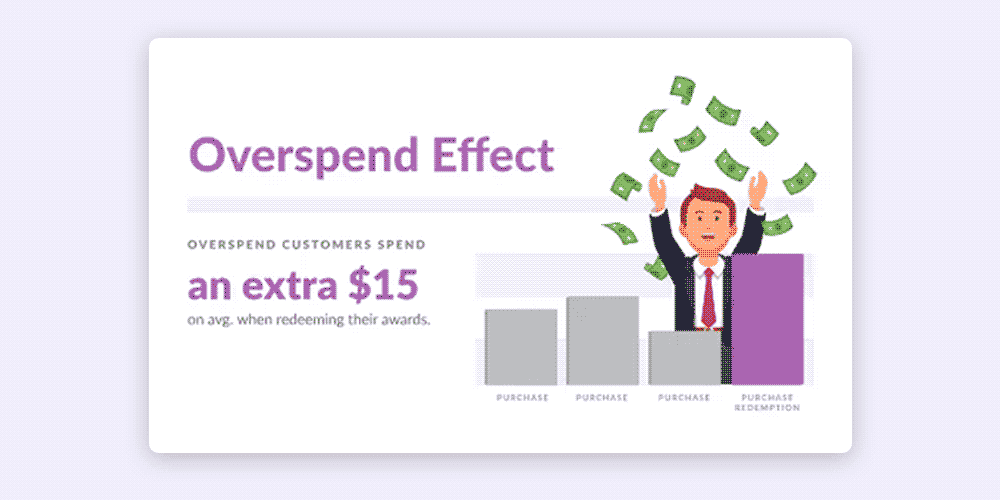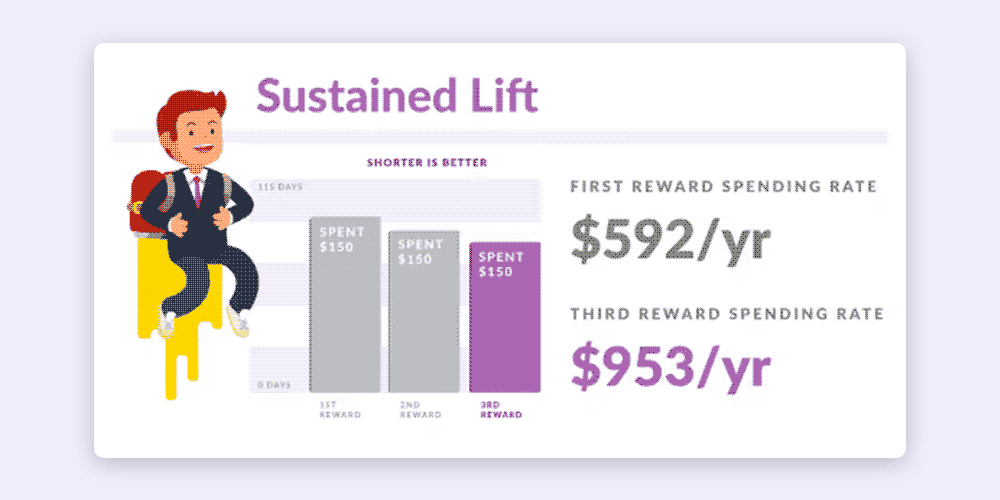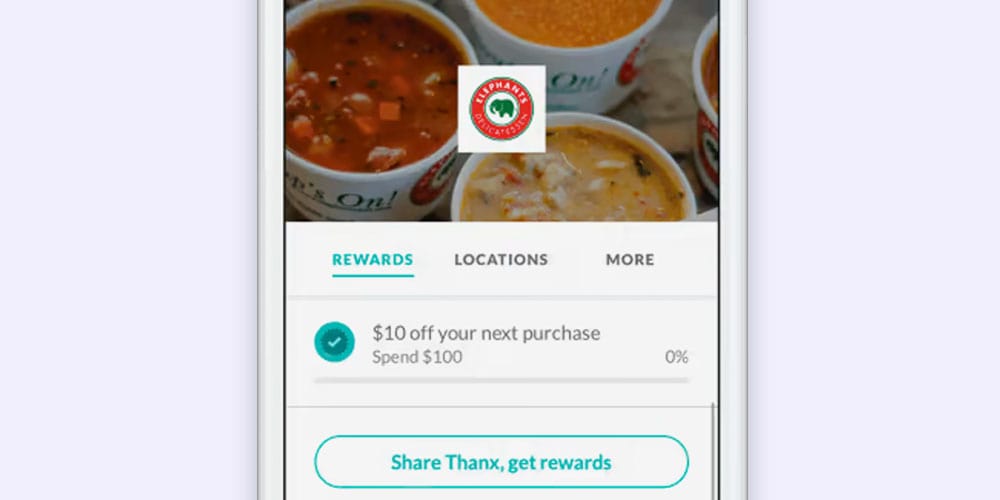Say your favorite coffee shop sends you a notification letting you know that you are only $10 away from receiving a free coffee and pastry. All of a sudden, you decide you need to visit and spend that ten bucks to get your reward. This eagerness to make it to the finish line is called the Homestretch Effect.

When customers get closer to earning rewards, they tend to visit more and spend more during the final “homestretch” to reach their reward more quickly. To measure your homestretch effect, take a look at your customer spending habits over a period of time and compare that to their behavior during the homestretch period. If you see an increase in overall revenue distribution in that period, it’s most likely due to the homestretch effect.
A consumer’s experience as part of a loyalty program is similar to running a race around a track. They have to run around the track (make purchases), and only when they make it to the finish line do they earn a reward…most are running the race (making repeat purchases) with the finish line (reward) in their sights. At Thanx, we’ve measured up to a 60 percent increase in visit frequency on the final two transactions (the homestretch) leading up to a reward. In this post, we’ll explore examples of the homestretch effect and explain how it helps increase your revenue.
The Homestretch Effect and Overspending
The overspend effect is when customers are likely to spend more when they have a reward to redeem. Our platform tracks how much a customer spends on average when they don’t have a reward to redeem, and compares that number to the amount they spend when they do have an award to redeem. When customers feel that they are getting a good deal, sales increase, as does revenue.

When customers are incentivized to buy more, their check size also increases.
For example, Wendy redeems her offer for a free $5 pastry at your quick service restaurant. Instead of taking her free pastry and leaving, she decides to also purchase two dozen Italian cookies for her office. Instead of spending her usual $5 on her average visit, she now spent a total of $15, even after the reward, during the homestretch period. After receiving her reward she made it to the finish line and decided to overspend thanks to the reward.
If all of your loyal customers overspend when they redeem a reward, your revenue can dramatically increase, which is the best part about the overspend effect.
The Homestretch Effect and Sustained Lift
Customer behavior changes over time, and a strong customer engagement and loyalty program can change buying habits for the better. When a customer increases their level of engagement with your business after receiving personalized rewards, it’s called a Sustained Lift. The more rewards customers get, the more loyal they feel, and the more they will visit and spend at your business.

Sustained lift directly correlates to a loyalty program’s ROI and helps merchants measure how effective their program is. Our platform helps you understand customer behaviors and how their spending habits change over time. If they spend more and visit more frequently once they begin receiving rewards, your business can experience a sustained lift in revenue.
Make it easy for consumers to tell when they will earn rewards
The closer a customer gets to crossing the finish line, or collecting their reward, the more they want to spend. The more transparent your program is, the more successful it will be. Thanx makes it easy for your customers to see their progress and receive notifications to let them know when they are getting closer to receiving a reward.
The more your customers understand how your program works, and where they fall within the homestretch, the more eager they will be to reach the reward faster. The more transparent you are with them, the easier it will be to collect their reward and begin sprinting toward the next one.
Make rewards attainable
When implementing a loyalty program, you want to make sure that your program will be ROI positive and generate revenue by rewarding your best customers who visit and spend the most. Make sure to balance the rewards you give with your customers’ effort and behavior to make the reward worthwhile. If your rewards seem unattainable, customers will lose motivation to reach the finish line.

You need to understand who your customers are and give them what they want at the right time, and in a personalized way. For example, if Jake needs to spend $700 to get a free pizza, he will most likely determine the dollars spent aren’t worth the reward. However, if he needs to only spend $100, this reward will feel much more attainable and make him excited to reach the finish line and organize a family pizza night.
Be realistic when deciding how long it will take for each customer to reach and redeem a reward.
Be creative with rewards
While traditionally, reward points are correlated to the number of dollars spent, you can be creative when incentivizing customers to get excited about collecting their rewards. You can run promotions that may not directly correlate to the number of dollars they spend, but can still increase your overall revenue. These creative promotions will increase engagement, and also build customers’ excitement about reaching the homestretch.
Check out these non-discount reward examples.
Wrap up
The homestretch effect can dramatically increase your revenue with overspend and sustained lift. The more rewards your customers receive, the more likely they are to spend more.
There are several steps you can take to make sure the homestretch effect is both effective and worthwhile for your customers. The more transparent, attainable, and creative you are, the more excited your customers will be when they race toward the finish line to redeem their rewards and generate positive ROI and revenue for your business.
Interested in learning more? Check out our "The Race for Customer Loyalty" Guide
View the free guide